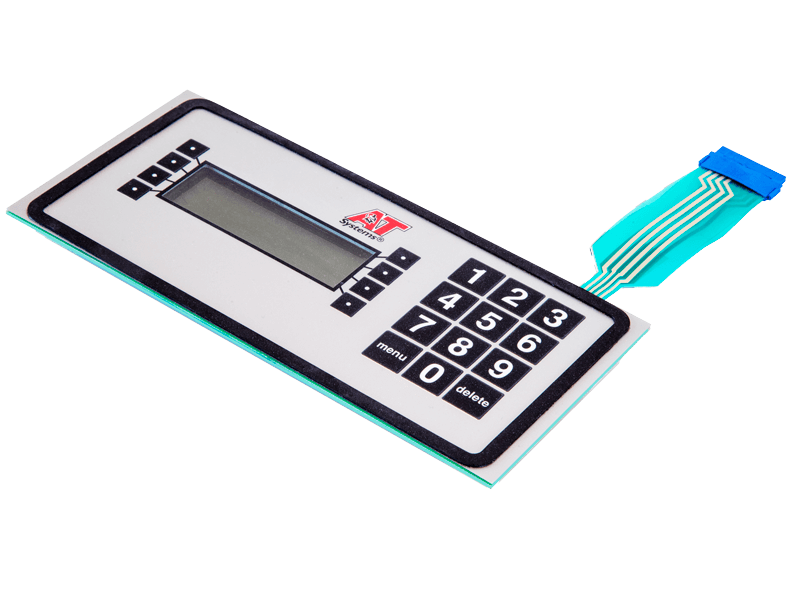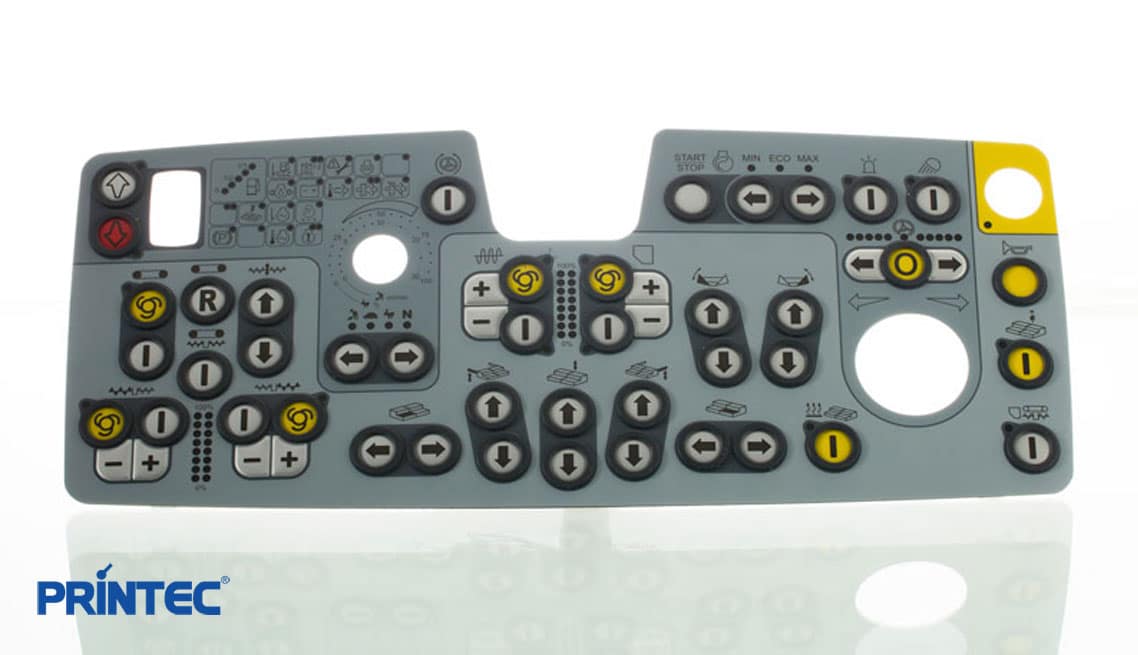Membrane Layer Changes Explained: A Comprehensive Guide to Their Advantages
Membrane switches stand for a functional and sophisticated option for developing interface across a range of markets. Their multilayered layout not only makes certain functionality through easy pressure but additionally uses substantial benefits, such as resilience and personalization. As sectors progressively look for trustworthy and efficient control user interfaces, comprehending the specific advantages and applications of membrane layer switches over ends up being necessary. The ins and outs of their layout and execution present distinct obstacles that benefit closer examination. What factors should be taken into consideration to totally utilize their possibility in contemporary applications?
What Are Membrane Switches?

When pressure is put on the membrane switch, the layers make contact, finishing an electrical circuit. This simple system enables for a wide range of applications, from customer electronic devices to commercial equipment. Membrane buttons are usually developed to be resistant and waterproof to dirt and pollutants, making them ideal for atmospheres where toughness is vital.
Furthermore, the versatility of the products utilized in membrane layer switches promotes innovative layouts that can adapt numerous forms and measurements. This versatility adds to their popularity in varied areas, consisting of medical devices, automobile controls, and home appliances. On the whole, membrane layer switches stand for an essential element in modern-day interface modern technology, linking the void between customers and electronic systems.
Secret Advantages of Membrane Buttons
Amongst the myriad of customer interface choices available, membrane layer changes attract attention for their distinct mix of advantages. Among the main benefits is their compact and light-weight layout, which enables assimilation right into a large range of devices without including considerable bulk. This is especially helpful in applications where area is restricted.
Additionally, membrane changes deal durability and resistance to ecological elements. They are normally created with materials that can withstand wetness, dirt, and numerous chemicals, making them ideal for rough problems. This durability contributes to a longer life expectancy compared to typical mechanical buttons.
One more considerable benefit is the adaptability in customization. Membrane buttons can be published with different graphics, colors, and appearances, enabling customized styles that fulfill certain branding or practical demands. This versatility reaches the variety of layers and circuit choices, giving designers with numerous setups.
Moreover, the responsive comments offered by some membrane switches over enhances user experience, making them extra instinctive to run. Finally, the ease of cleansing and upkeep additionally strengthens membrane switches as a useful selection in both customer and industrial applications. Membrane Switches. On the whole, these key benefits make them a recommended service for many developers and makers
Applications in Various Industries
Just how do membrane layer buttons locate their area throughout varied industries? Their flexibility and functionality make them integral elements in industries varying from healthcare to customer electronic devices. In medical tools, membrane buttons are utilized for their ease of cleaning and resistance to contamination, making sure health in environments where sterility is essential.
In the customer electronic devices industry, these buttons give smooth, straightforward user interfaces that improve item appearances while maintaining toughness versus deterioration. Automotive applications gain from membrane changes too, where they are utilized in control panels and control board, providing trusted efficiency in tough problems.
In addition, commercial machinery employs membrane layer buttons for control panels because of their effectiveness, capacity to withstand severe atmospheres, and customizable layouts that deal with certain operational demands. The food industry leverages membrane layer switches for their convenience of use and resistance to spills, guaranteeing functional effectiveness in fast-paced settings.
Eventually, the adaptability of membrane layer switches across these varied applications underscores their crucial function in modern-day technology, enhancing user communication while meeting industry-specific demands. Their continued evolution guarantees additional combination into emerging areas and innovative items.
Design and Modification Choices
The layout and personalization choices offered for membrane buttons are crucial for tailoring interfaces to satisfy particular individual needs and visual preferences. These buttons can be developed in various forms, dimensions, and formats, permitting for seamless integration right into diverse applications. The adaptability in layout implies that producers can develop distinct user interfaces that boost functionality and maintain brand name identification.
Personalized graphics, appearances, and shades can be put on content the surface of the membrane layer button, providing a chance for branding and individual engagement. Additionally, backlighting alternatives, such as LED lighting, can be integrated to boost visibility in low-light problems, hence enhancing functionality.
Useful components can additionally be customized, including responsive responses and actuation force, which can be gotten used to match various individual communications. The choice of materials, such as polyester or polycarbonate, permits for variants in durability and environmental resistance, accommodating the particular demands of various industries.
Inevitably, the extensive design and modification abilities of membrane layer switches enable companies to create aesthetically attractive and straightforward interfaces, ensuring that their products satisfy both aesthetic and practical demands efficiently. Membrane Switches.
Considerations for Execution
Implementing membrane layer changes needs careful consideration of numerous factors to make sure optimum capability and user experience. One of the key factors to consider is the designated application atmosphere. Elements such as exposure to dampness, extreme temperature levels, and chemical compounds can dramatically influence the switch's performance and durability. Selecting materials that stand up to these problems is critical.

One more crucial aspect is the button's style and format. Making sure that the tactile feedback and actuation pressure align with individual assumptions enhances functionality. Conducting individual screening can give valuable insights into the optimal layout.
Furthermore, compatibility with electronic parts have to be analyzed. The button's wiring need to line up with the overall system design, ensuring reliable signal transmission and reducing interference.
Moreover, production methods and costs need to be reviewed. The choice in between custom-made layouts and basic versions can lead and influence both spending plan time.
Last but not least, take into consideration repair and maintenance. Membrane buttons may call for certain cleaning and treatment procedures to preserve their look and functionality in time. By resolving these factors to consider, companies can implement membrane layer buttons that satisfy their home functional needs while offering a favorable user experience.

Conclusion
In conclusion, membrane layer switches over stand for a flexible and long lasting control interface suitable for a vast range of applications throughout several markets. Membrane Switches. As innovation proceeds to progress, the relevance of membrane layer switches in modern devices continues to be substantial, offering both functionality and visual allure.
Membrane switches over represent a flexible and this website innovative remedy for developing customer interfaces across a range of industries.Understanding the essential elements of modern digital user interfaces, membrane layer switches are a kind of customer interface gadget that consist of versatile, thin layers of material. Generally, membrane layer changes represent a vital component in modern-day user interface innovation, bridging the gap in between users and electronic systems.
Amongst the myriad of individual interface choices offered, membrane layer switches over stand out for their special combination of benefits.The style and customization choices readily available for membrane layer buttons are crucial for tailoring interfaces to satisfy details individual needs and visual choices.